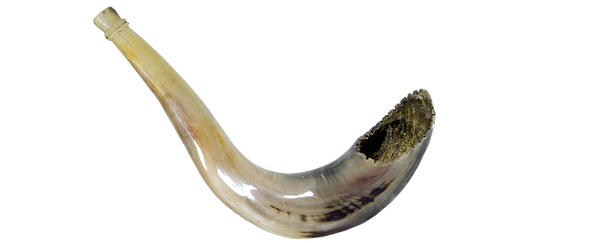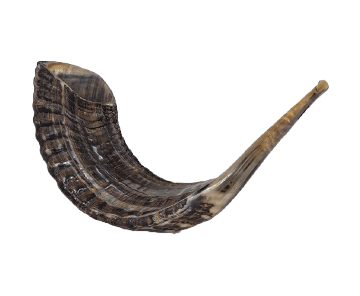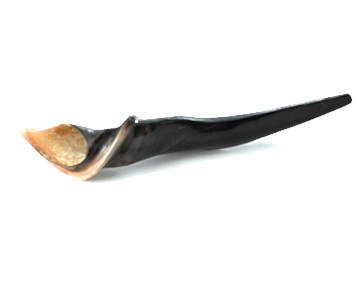Why do we blow the shofar on Rosh Hashanah? How many blasts are blown in order to fulfill the minimum scriptural requirement of the day?

A shofar is a musical wind instrument made from a hollowed out animal horn. In ancient times the shofar was used as a tool for announcing news and for warning about threats. In Judaism the shofar is a religious article used for the mitzvah (commandment) of blowing the shofar on Rosh Hashanah, and as such became a Jewish symbol.
In the bible the shofar is presented within several contexts and it is actually the most frequently mentioned musical instrument. The shofar was also used by other peoples in ancient times. At wartime they would blow the shofar in order to deter the enemy. In Carchemish, a relief art piece was discovered, dating back from the Iron Age which features people playing the shofar and the drum.
What the shofar symbolizes
Crowning G-d King of the world.
A reminder of the revelation at Mount Sinai
A call to repentance
Hope for redemption
A reminder of the bidding of Isaac.
A – The shofar blasts signalize that on this day we crown G-d King over all the Earth. Likewise, in the past, kings would celebrate their rise to the throne by blowing shofars.
B – The shofar blasts enable to bring forward our forefathers’ merits and serve as a reminder of the binding of Isaac: G-d refrained from accepting the sacrifice of Abraham, and availed a ram in lieu of Isaac.
[youtube video=”https://www.youtube.com/embed/ncB54pD1frk” height=”350px”]
C – Blowing the shofar recalls the revelation at Mount Sinai, where the people declared unanimously at the foot of the mountain: We will do and we will hear! This moment was accompanied by ‘a very loud shofar sound’ symbolizing the renewed covenant between Israel and God.
The shofar is made from a ram’s horn (as explained before, in memory of the binding of Isaac,- and G-d forbid, it should not be made from a cow’s horn, which would otherwise serve as a reminder of the golden calf). Ram horns are bent and curved, suggesting that we are required bend our knees, erase our haughtiness, and be submissive while we stand on trial in front of the Supreme Judge of the Celestial Court.
[youtube video=”https://www.youtube.com/embed/-EufpWQurBo” height=”350″]
‘Baal Hatokea’ or ‘Master Blower’ is the title given to the person chosen by the congregation to blow the shofar. From a kabalistic perspective, the shofar blasts have the ability to silence the mouth of Satan the Accuser.
It is possible that during the Second Temple Period, they blew the shofar only three times. But during the Mishna times they added blasts to be on the safe side
[youtube video=”https://www.youtube.com/embed/Jtm1gSUekwg” height=”350″]
So how do we blow the shofar?
[Tekiah – Shvarim – Truah – Tekiah] 3 times
[Tekiah – Shvarim – Tekiah] 3 times
[Tekiah – Truah – Tekiah] 3 times
Shofar blowing is part of the Mussaf prayer. Since the Mussaf prayer is recited twice (once in silence and once in public), the shofar is blown twice. Likewise the amount of shofar blasts increased [over time] during prayers.
[youtube video=”https://www.youtube.com/embed/LzuayLThtl8″ height=”350″]
Order of blasts:
Shacharit (0)
Shofar service (30)
Silent Mussaf (30)
Public Mussaf (30)
End of service (10)
A total of thirty blasts are blown three times, plus an extra set of ten blasts is added at the end of the prayer service. This is done for the two days of Rosh Hashanah. In terms of the minimum amount required by the Torah, it is enough to be present during only one set of 30 blasts





